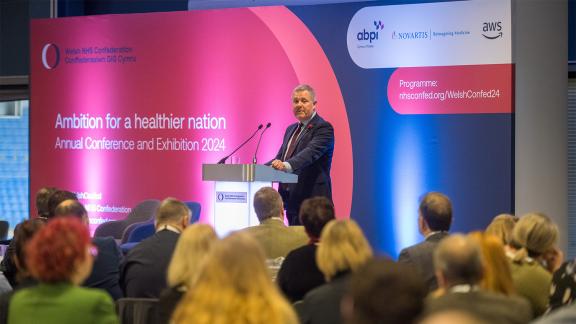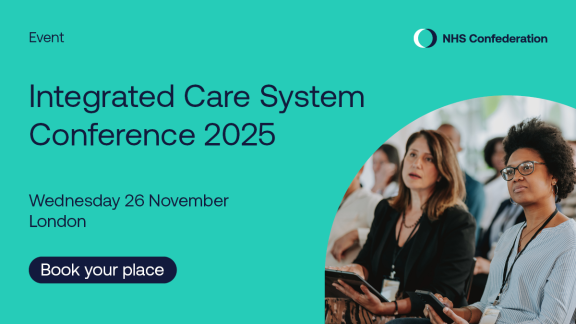Key statistics on the NHS

Key points
- The Department of Health and Social Care receives funding of over £180 billion - one of the biggest departmental budgets alongside the Department for Work and Pensions.
- The NHS is one of the biggest employers in the world, with some estimates putting it as high as the sixth biggest only behind the Indian Ministry of Defence, US Department of Defense, the People’s Liberation Army of China, Walmart and Amazon.
- In 2021/22, there were 1.6 million patient interactions with NHS services per day.
- International comparative analyses shows the NHS is one of the top-performing and the most affordable healthcare systems in the world.
- There are 42 integrated care systems (ICSs) across the country and each health system possesses unique characteristics. We find that ICSs differ on a range of population health metrics.
NHS funding
Healthcare activities are funded by the Department of Health and Social Care budget. This funding is predominantly split in two: Resource Department Expenditure Limit (Resource DEL), which represents day-to-day running costs, and the Capital Departmental Expenditure Limit (Capital DEL) which refers to investment in infrastructure.
Total spending in 2020/21 and 2021/22 also included ringfenced emergency funds provided by the government to help the Department of Health and Social Care respond to the COVID-19 pandemic.
Around £50 billion and £43 billion of emergency funding was allocated in 2020/21 and 2021/22, respectively. See the chart below (figure 1).
Planned spending on healthcare is mostly passed on to NHS England. For example in 2022/23, the total budget was £180.2 billion, of which £12 billion was for Capital DEL and £168.2 billion was allocated Resource DEL. £152.6 billion of this latter budget was passed onto NHS England (see figure 2).
For 2023/24, the planned Resource DEL for NHS England is £160.4 billion, having been £155.4 billion in 2022/23. Most of this budget is allocated to commission local health services and the budget responsibility sits with integrated care boards (ICBs).
The chart below (figure 3) shows how NHS England divided Resource DEL funding in 2022/23.
Out of the £152.6 billion allocated to NHS England in 2022/23, £107.8 billion was passed on to integrated care boards, making up just over 70 per cent of NHS England’s total budget. NHS England spent a further £29.8 billion on commissioning services directly, such as specialised services, public health and some primary care services. £3.8 billion was allocated to the service development fund, £2.3 billion for elective services recovery fund and £3.2 billion was spent on NHS England’s central admin and programme. A further £6.1 billion funds all other systems which includes £3.4 billion for increased employer pension contributions.
NHS workforce
The NHS is one of the largest employers in the world (see figure 4 below), employing 1.6 million people (headcount) as of 2023. Across hospital and community health services (HCHS) there were over 1.4 million employees and over 190,000 general medical practice staff.
The full-time equivalent (FTE) total NHS workforce as of 2023 was 1.4 million, with over 1.25 million employed within HCHS and just under 150,000 within general practice. A more detailed breakdown is shown below (figure 5), focusing on FTE workforce by roles and functions.
Across HCHS, there are over 130,000 doctors, 328,000 nurses and health visitors, 22,000 midwives, 18,000 ambulance staff, 160,000 scientific, therapeutic and technical staff and 387,000 clinical support staff (as of March 2023). There are also over 206,000 infrastructure support personnel, which consists of managers, senior managers, and those working within central functions and property and estates. These are FTE workforce numbers across HCHS.
Within primary care, there are over 36,000 FTE GPs, 16,000 nurses, 15,979 direct patient care staff and 73,838 staff undertaking administrative and other non-clinical roles.
Vacancies
A vacancy is defined as a post that is unfilled by permanent or fixed-term FTE staff. Some vacant posts may be filled by agency or temporary staff, but these posts are still considered to be vacant. Although the number of unfilled posts in the NHS has been consistently high historically, it has particularly increased since the fourth quarter of the financial year 2020/21 when it had been at its lowest point since 2018/19, sitting at 76,082. As of March 2023, vacancies had increased to 112,498 in the NHS across England (see figure 6). This accounts for 8 per cent of the planned FTE workforce levels.
In Q4 2022/23, of the 112,498 total vacancies, 8,549 were medical, (5.8 per cent of the medical workforce), a slight increase when compared to the same time a year ago (Q4 2021/22) where there were 8,016 vacancies (5.6 per cent of the medical workforce). However, the greatest proportion of vacancies are seen in nursing with 40,096 posts unfilled, or in other terms 9.9 per cent of the total nursing workforce. The chart below (figure 7) shows the number of vacancies and the vacancy rates for medical and nursing roles across time.
NHS activity and performance
Activity
Defining and measuring overall NHS activity is challenging as the boundaries of what activity is undertaken by NHS versus what is commissioned and paid for it is not always the same. NHS activity here is measured by the total number of GP appointments, total number of interactions in community services, outpatient attendances, inpatient stays (counts of finished consultant episodes), A&E attendances, counts of contact with ambulance services (calls), and total 111 calls offered. These are all services delivered and commissioned by the NHS.
Figure 8 below provides a summary of all NHS-related activity for 2021/22. There were over 590 million contacts with patients between April 2021 to March 2022. On average, this are over 1.6 million interactions with patients within the NHS per day. By contrast, in the previous financial year, there were 490 million patient contacts (April 2020 to March 2021).
Further, in 2021/22, there were over 318 million GP appointments, which accounted for almost 54 per cent of all NHS activity. Again throughout 2021/22, there were 95.2 million activities (total patient contacts) within community services and 95.5 million outpatient attendances (compared to 77 million and 78.4 million in the previous year, respectively).
Performance
NHS England publishes performance related statistics on a monthly basis, ranging from urgent and emergency care to cancer and other routine care. Below, we present time series analysis on a selected number of performance measures.
Cancer
The graph above (figure 9) shows the proportion of patients seen by a specialist consultant within two weeks of an urgent GP referral for suspected cancer has improved in recent months, but it is still considerably below the national target. In fact, the 93 per cent cancer performance target for patients to be seen within two weeks has not been met throughout 2022 and so far in 2023. Although in February 2023, it was making a recovery of 86.1 per cent after performance in low 70 per cent mark in autumn/winter of 2022.
Other data tells us the percentage of patients receiving their first treatment for cancer following a decision to treat stood at 90.3 per cent in May 2023, slightly below the 96 per cent national target. The 2022 annual performance on this measure was 92.1 per cent where out of 320,337 patients with a decision to treat to a first treatment for cancer, 295,066 were treated within one month. Year-to-date average in 2023 (up to 2023 May) is currently 90.6 per cent.
The proportion of patients receiving first treatment for cancer within two months, following an urgent GP referral was 58.7 per cent in May 2023, considerably below the 85 per cent target. The 2022 average for this measure was 62.1 per cent with 108,580 patients within the standard out of a total 174,775.
Elective care
Although the number of people waiting for elective care significantly increased following the onset of the COVID-19 pandemic, it was already quite high previously. For example, prior to the pandemic, the total elective waiting list was 4.42 million in February 2020 as shown in the chart below (figure 10).
However, the interruption in non-urgent services following the pandemic has significantly worsened the waiting lists. For example, the latest figures for May 2023 show that there are an estimated 7.47 million people waiting for elective care. 4.44 million are within 18 weeks with another 3.03 million waiting over 18 weeks but less than 52 weeks, and almost 400,000 are waiting over a year.
Elective care waiting times also vary across specialties. The chart below (figure 11) shows the breakdown of the total 7.21 million waiting list by treatment functions as of for January 2023.
In May 2023, the specialities with the highest number of waiting lists were trauma and orthopaedic with almost 816,000 and ophthalmology services with over 647,000 people waiting for elective care.
Emergency care
The four-hour A&E waiting time target is one of the most well-established and widely-known measures of A&E performance. This operational standard states that at least 95 per cent of patients attending A&E should be admitted, transferred or discharged within four hours (although an intermediary threshold target of 76 per cent is aimed to be hit by March 2024 for all departments). The chart below (figure 12) shows the monthly A&E performance against the 95 per cent standard between month/year to month/year
The last time the 95 per cent target was met was in August 2014 (95.2 per cent) and performance has been gradually deteroirtrating since then. For historical comaprison, 97.3 oer cent of all patients attending A&E in November 2020 were seen within four hours. More recently however, only 73 per cent were seen within four hours, in June 2023.
Four-hour wait performance did rebound briefly because of a fall in attendances following the onset of the COVID-19 pandemic. In May 2020, 93.5 per cent of all patients attending A&E across all departments were seen within four hours. This improvement in performance coincided with a fall in attendances. However, performance has deteriorated since then and now has reached its worst level on record.
International comparisons
Commonwealth fund data
According to data from Commonwealth Fund’s report published in 2021, the UK’s healthcare system was the most affordable out of nine other countries (Australia, Canada, France, Germany, Netherlands, New Zealand, Norway, Sweden, Switzerland and the USA). Furthermore, the NHS was found to be one of the best performing healthcare systems, only behind Norway, the Netherlands and Australia. See figure 13 below.
OECD data
Current expenditure on health as a proportion of gross domestic product (GDP)
According to OECD (figure 14), healthcare spend in the UK in 2020 was 12 per cent of GDP, ranking fifth biggest healthcare spend as a share of its GDP, ranking behind USA (18.8 per cent), Canada (12.9 per cent), Germany (12.8 per cent) and France (12.2 per cent). OECD also found the UK had 3.03 doctors per 1,000 people in 2020, fewer than some peer countries such Germany (4.47 per cent), France (3.36 per cent) and Australia (3.9 per cent). The UK also had one of the fewest hospital beds per 1,000 when compared to other OECD countries, with 2.43 beds per 1,000 population.
Integrated care system profiles
Following the Health and Care Act 2022, 42 integrated care systems (ICSs) were established across England. The aim is for the health system to form partnerships that allow for collaborative healthcare provision between hospitals, GPs, social care and others and subsequently to achieve a more joined-up health and care service.
This section explores the characteristics of ICSs by analysing selected population health metrics and how they vary across systems (figure 15).
ICSs differ in geographical size and the population numbers it serves. For example, while the average ICS population is 1.46 million, this significantly varies across systems. For instance, Shropshire Telford and Wrekin ICS has the lowest population size with 521,391 compared to Greater Manchester with 3,146,943.
Life expectancy
Healthy life expectancy at birth is a measure that represents the average number of years a person would expect to live in good health based on contemporary mortality rates and prevalence of self-reported good health.
The chart below (figure 16) shows that while the average healthy life expectancy at birth in England is 63.9 years, there exists slight variation across ICSs.
For example, Surrey Heartlands ICS has the highest healthy life expectancy with 69.7 years compared to 59.1 years in Nottingham and Nottinghamshire ICS, a difference of over ten years in life expectancy.
Prevalence of certain conditions/diseases
ICSs also differ considerably in terms of rates of prevalence on certain diseases and conditions.
Figure 17 above shows, for instance, Northeast and North Cumbria ICS has the highest prevalence of obesity with 13.07 per cent whereas South West London ICS has the lowest prevalence with 7.08 per cent. The national average for obesity prevalence is 9.7 per cent.
A similar scenario is observed when exploring prevalence on diabetes. The Black Country has the highest prevalence of diabetes with 9.2 per cent and Surrey Heartlands has the lowest rate with 5.81 per cent (see figure 18 above). The national prevalence of diabetes is estimated at 7.26 per cent.
Wider determinants of health – employment and fuel poverty
ICSs also differ in terms of socio-economic conditions. Looking at the proportion of people in employment in each ICS (figure 19), we see that systems such as Cornwall and the Isles of Scilly, Bristol and North Somerset and Somerset enjoy relatively higher levels of employment rates (72.1 per cent, 65.2 per cent, 63.6 per cent, respectively), indicating more favorable socio-economic conditions. Whereas, unemployment is significantly greater in north west London, north east London and Birmingham and Solihull (34 per cent,39.4 per cent,41.7 per cent, respectively).
A similar variation is observed in the percentage of households in ICSs that experience fuel poverty (figure 20).
Data is accurate as of February 2023 and this page will be updated with new figures and statistics on a quarterly basis.
Please contact Mehmet Bulut at mehmet.bulut@nhsconfed.org if you have any questions.


